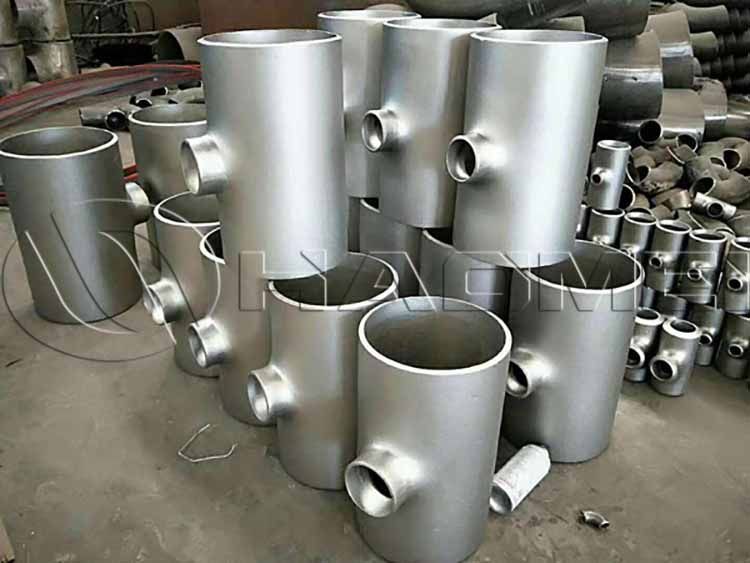Aluminum Tee and Aluminum Flange for Pipe Connection
In the field of marine engineering, the efficient operation of the pipeline system is directly related to the safety and economy of the ship. As key connecting components, the aluminum tee and aluminum flange are gradually replacing traditional metal pipes with their lightweight, corrosion-resistant and high-reliability characteristics, becoming an important choice for modern ship pipeline systems.

Aluminum Tee
As the core component of pipeline branches, aluminum tees are responsible for fluid diversion, confluence and direction switching. In the ship's cooling system, it can evenly distribute the cooling water of the main pipeline to multiple heat exchangers; in the fuel system, it ensures the balance of fuel supply to each cylinder of the engine through precise diversion; and in the ballast water system, aluminum tees can achieve water level adjustment in different compartments to ensure the stability of the ship's navigation.
Take LNG carriers as an example. The aluminum tees used in their cryogenic pipeline systems need to withstand an ultra-low temperature environment of -163℃. At this time, the low-temperature toughness advantage of aluminum tees is highlighted, which can avoid the risk of brittle fracture of traditional carbon steel materials at low temperatures and ensure the safety of the transportation process. It has three types:
Equal diameter tee: suitable for scenarios where the main pipe and branch pipe have the same diameter, such as ship ventilation systems.
Reducing diameter tee: used in systems where the main pipe and branch pipe have a large difference in diameter, such as fire water systems.
Y-type tee: the fluid turning angle is smoother, reducing pressure loss, and is often used for high-speed fluid transmission.
Aluminum flange
The core value of the aluminum pipe flange lies in achieving detachable connection between pipes and equipment while ensuring sealing performance. In the power system of ships, necked butt-welded aluminum flanges can withstand a high pressure of 30MPa to ensure the safe operation of high-pressure fuel pipelines; in seawater desalination systems, plate-type flat-welded aluminum flanges are treated with corrosion-resistant coatings to resist long-term erosion by chlorine-containing media.
Taking the sewage treatment system of luxury cruise ships as an example, the lightweight characteristics of aluminum flanges significantly reduce deck loads, while their non-magnetic properties avoid interference with ship navigation equipment, which is an advantage that traditional stainless steel flanges cannot achieve. It also has three types:
Butt welding flange: full penetration welding is used, suitable for high temperature and high pressure systems, such as main engine exhaust pipes.
Socket welding flange: insert welding is used to reduce welding deformation, commonly used in small pipe diameter systems below DN50.
Loose flange: used with flanging pipe, easy to install and maintain, suitable for equipment interfaces that are frequently disassembled.









